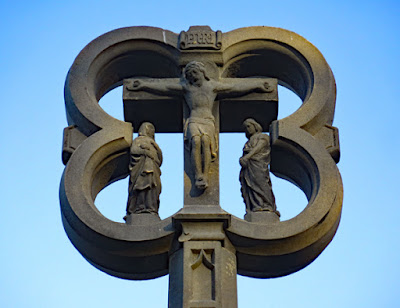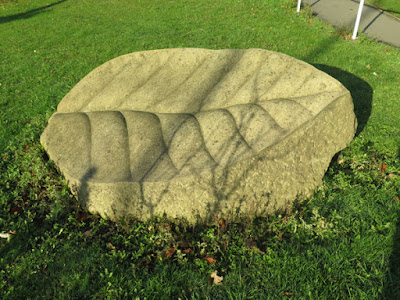 |
| The front elevation of Sheffield City Hall |
At the end of an afternoon spent exploring the geology and geomorphology of the Upper Don Valley, I finished my day by taking advantage of the late afternoon sunshine that lit up the lobby in Sheffield City Hall.
 |
| An oblique view of Sheffield City Hall |
Designed in 1920 by E. V. Harris, who was also responsible for Leeds Civic Hall, the construction was delayed and the building was eventually completed in 1932, using Darley Dale stone from the Derwent Valley to the north of Matlock. This relatively iron free medium grained sandstone from the Ashover Grit was renowned as a building stone, along with others in the area, and it has stood the test of time well.
 |
| Bomb damage on a portico column |
The only repairs visible are to the columns of the portico, where small square indents were inserted after a bomb exploded in Barkers Pool during WWII and blend in well with the original stonework, even after the building was cleaned in the last couple of years.
 |
| The apsed north side of Sheffield City Hall |
The neoclassical design of the exterior is quite plain and generally without ornament, with the most unusual feature being to the apsed north side, where a series of pillars with Corinthian capitals rise several feet higher than the wall and carry an entablature.
 |
| An Ashburton marble door surround |
Entering the lobby, it is the polished Ashburton marble panels surrounding the internal doors to the auditorium that catches the eye. This dark grey polished limestone, with pink blotches and fossil sponges is very attractive and was made very popular by Victorian architects, with another fine example of its use being in the nearby Sheffield Town Hall.
 |
| A detail of Ashburton marble |
The walls are lined with panels of alternative light and dark grey Hopton Wood Stone, a Carboniferous Limestone from Derbyshire that was again highly desired by architects for interior decoration. It has been used in country houses and other fine historic buildings throughout the UK and, again at Sheffield Town Hall, the walls to the main staircase are in part lined with this.
 |
| Hopton Wood wall panels and black limestone flooring |
The floor is paved with very dark grey limestone of unknown provenance, but it is undoubtedly a Carboniferous Limestone, with this type of stone historically being supplied from Kilkenny and Galway in the Republic of Ireland and from the Wallonia region in Belgium.
 |
| A Hopton Wood stone lion in Sheffield City Hall |
One particularly interesting feature in the lobby is the pair of lions, in Derbyshire gritstone, which were originally sited on the main stage. Standing 1.25 m high and weighing 2.5 tonnes each, they are fine examples of stone carving in an Art Deco style by John Hodge.
 |
| A detail of a Hopton Wood stone lion |











































